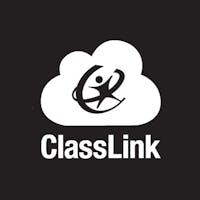Pete Just is the driving force behind a dizzying array of student-focused technology initiatives for both the state of Indiana and the Metropolitan School District (MSD) of Wayne Township, where he is Chief Technology Officer.
He helped launch Indiana’s first and only virtual school in 1999, earned CoSN’s coveted Certified Education Technology Leader (CETL) certification and is a member of CoSN’s Board of Directors. He also dedicates his time and knowledge to leading the Indiana CTO Council, in addition to acting as co-chair of the Indiana Department of Education’s K12 Cybersecurity Task Force. True to his humble nature, Just’s technology efforts are driven by one altruistic goal: “improving opportunities for students to follow their God-given talents.”
Just’s work amplifies the many academic, social and mental health supports in place at MSD Wayne. The result of this combined effort is an impressive graduation rate of 91 percent, despite the fact that 76 percent of the district’s 16,484 students qualify for free and reduced lunch and textbooks.
Determined to build upon their success, Just and his team recently adopted ClassLink’s platform to address digital access issues. EdSurge talked with Just to learn how ClassLink helped remove barriers for all students and how this particular platform can grow to meet other digital challenges.
EdSurge: What led you to add ClassLink to your district’s technology arsenal?
Just: Twenty years ago, we launched a significant commitment to digital learning, starting with our online school. Then, we rolled out significant digital content adoptions in 2011, and by 2013, we’d created a four-year initiative to implement one-to-one Chromebooks for all grade levels.
We hoped we could integrate all of our digital products into our learning management system, and all of our digital resources would be in a library organized by state standards and keywords. As we started getting deeper into the weeds, we realized the difficulty of incorporating all these resources in one place and rostering an increasing number of digital resources. (We have well over 100 student applications right now).
We needed a solution that would simplify access for our students and staff and expedite how they get into the products with an improved rostering process. ClassLink’s Single Sign-On platform was that solution.
What does access look like now?
Once a student or staff member started at Wayne, our goal was that, within 24 hours, you would be in all the digital systems you need access to based on your schedule, what you teach or which classes you are taking.
Now, everyone logs in to ClassLink with just one username and password, and all of our digital apps, resources and even web links are in ClassLink’s LaunchPad, which we’ve branded as Wayne Learning Hub. We can even tag them, so students and staff use filters to search for specific apps.
Adding and rostering new products is also more straightforward and predictable with ClassLink’s Roster Server. They use open data standards, so rostering is easier and faster. And as a result of that, my team and I feel like we've got some hours back.
We've done an excellent job of helping people understand how syncing works. So, teachers know that if a new student joins at 10 a.m. today, by tomorrow, they can trust that 99 percent of the time, that child will be up and running. Now, teachers don’t have to worry about how they will teach students to get into everything. We’ve taken that off their plates. Just log in to Classlink, and it’s all there.
How has improved access helped students and teachers?
ClassLink helps us do our job of getting that barrier to entry down, and as the barrier to entry goes down, utilization goes up. ClassLink’s QuickCard is a big part of lowering those barriers for our most vulnerable students. It’s a card with a QR code that students wave in front of their camera to log in to our learning hub. We use QuickCards for our special education population of students with complex communication, physical, medical and educational needs, as well as our primary students.
By using this quick way to access all the needed resources in one place, we help to move our complex students to instruction expeditiously, overcoming the physical and cognitive hurdles of traditional approaches to digital access. That alone has had a significant impact on digital learning.
In what other ways has ClassLink improved access in your district?
Rostering and single sign-on access to all digital resources were important aspects to us, but having a LaunchPad, one place to find everything, was a whole other thing.
For students and teachers, the LaunchPad is clean, themed and branded as the Wayne Learning Hub with our logo—the kind of stuff that makes it feel easy to use, fun and made for us. But also, this hub is the place you go to access almost everything. And if it's not there yet, we're working on getting it there. So, that's a huge benefit to simplify digital learning for staff.
I’ve also used ClassLink Analytics regularly throughout the pandemic to share data with our superintendent and cabinet to keep them aware of what access looked like (how many students were logging in) and which applications were heavily depended on by students and staff. That data helped me make purchasing decisions when all the premium resources that were free during the spring went back to pay-to-play.
We haven't started using OneSync yet for provisioning. If it weren’t for the pandemic, we would be using it by now, so that’s another way ClassLink will help us. In so many ways, having ClassLink has paid off in dividends and will continue to as we get deeper into additional features.



